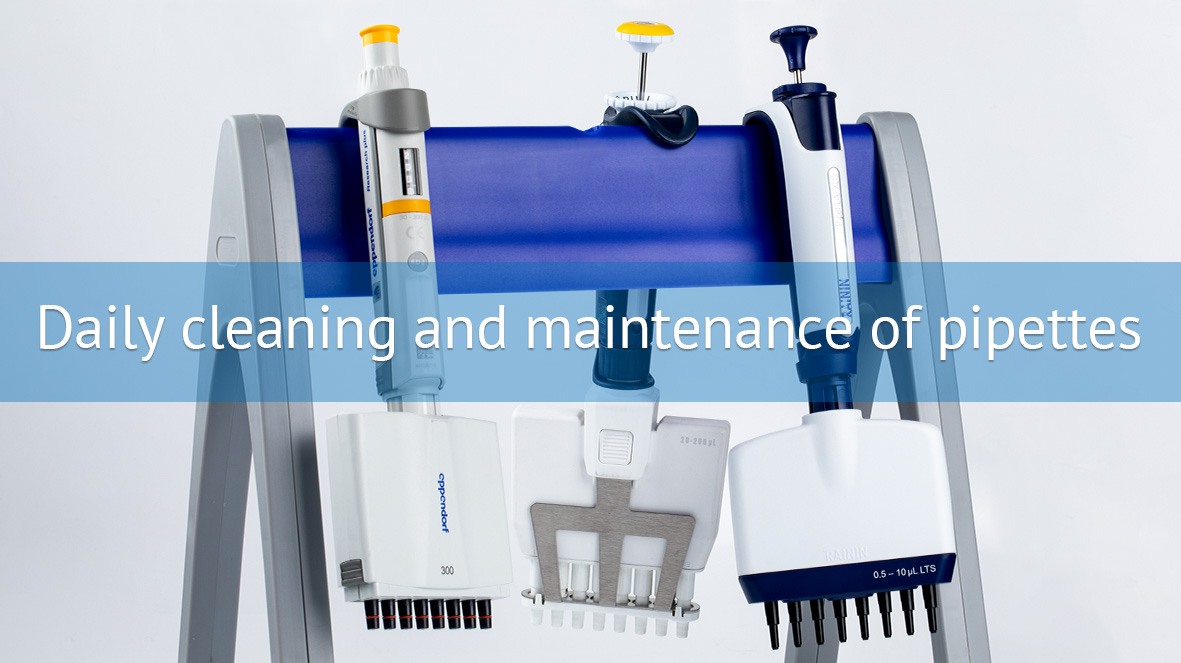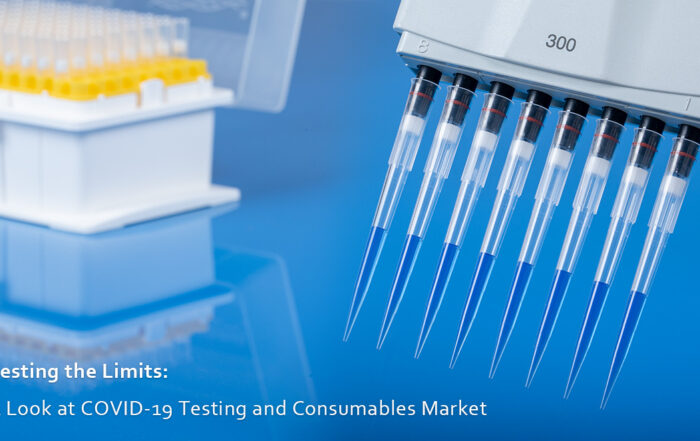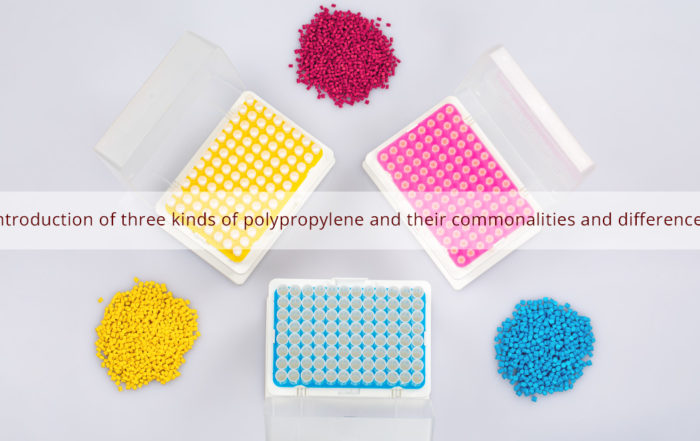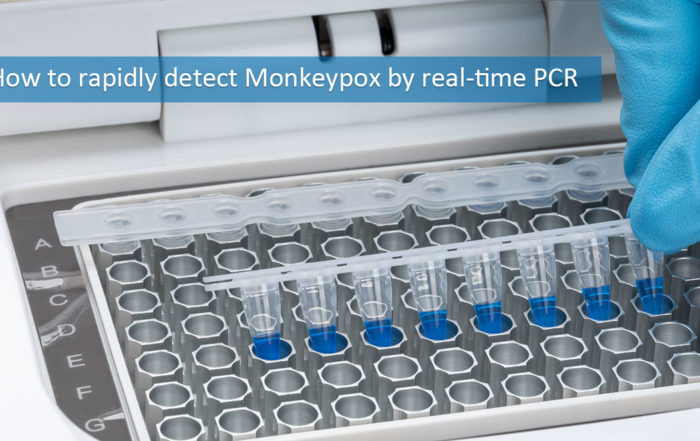Table of Content
1. In order to ensure the accuracy of the pipette, please kindly carry out the regular maintenance according to the specific usage and clean the pipette especially after using aggressive solvents. With these simple cleaning and maintenance methods, the life of your pipette would be properly extended.
I. External cleaning
Method: According to the usage, it could be cleaned with detergent, or disinfected with 60% isopropyl alcohol, then rinsed with double distilled water, and dried.
II. Internal cleaning
Generally, the sealing ring does not need maintenance, and the piston needs to be coated with a thin layer of silicone grease after cleaning or replacement (the pipette need to be rotated to a large scale after daily use to restore the spring to its original shape and help maintain the elasticity of the spring). There are different cleaning and maintenance methods for liquids with different properties. Please see the table below for more details.
Cleaning and maintenance methods for liquids of different properties
| Handling liquids | Operating characteristics | Cleaning and maintenance methods |
| Aqueous solutions and buffers | Calibrate pipettes with steamed filling water for accurate results. | Turn on the pipette and rinse the contaminated area with double steam water. Dry in a drying oven and apply a small amount of lubricating oil to the piston at a temperature not exceeding 60-CO. |
| Inorganic acid/base | If frequently pipetting high concentrations of acids/bases, it is better to occasionally rinse the lower half of the pipette with double-distilled water. Please note to use a nozzle with a filter. | The plastic materials and ceramic pistons used in pipettes are mostly acids and alkali resistant materials (except for hydrofluoric acid). However, the vapor of acid/lye may enter the lower part of the pipette and affect its performance. And the cleaning method is the same as the “water solution” section. |
| Potentially infectious liquid | To avoid contamination, please use nozzles with filter cartridges or use the method of forward substitutions to remove. | Autoclave the contaminated part for 20 minutes at 121°C, or immerse the lower part of the pipette in a laboratory-conventional disinfectant. It was then washed with double distilled water and dried as described above. |
| Cell culture | To ensure sterility, please use a nozzle with a filter. | Please refer to “Potentially Infectious Liquid” cleaning method. |
| Organic solvents | The density is different from that of water, so it is not available to adjust the pipette; due to high vapor pressure and changes in wetting behavior, pipetting would be done quickly; after pipetting, please disassemble the pipette and let the liquid evaporate. | Usually, for liquids with high vapor pressure, it is sufficient to allow the process of natural evaporation or immerse the lower part in the disinfectant (make sure that the liquid level of the immersion could not exceed the spring position of the seal ring to avoid liquid corrosion). Rinse with double distilled water and dry it with the above drying method. |
| Radioactive solution | To avoid contamination, it is better to use a nozzle with a filter or try to use the forward substitution method. | Disassemble the pipette, immerse the contaminated part in the compound solution or special cleaning solution, wash it with double distilled water, and dry it with the above drying method. |
| Nucleic acid/Protein solution | To avoid contamination, a nozzle with a filter or a forward substitution method would work. | Protein: disassemble the pipette, wash with detergent, wash and dry as described above Nucleic acid: boil in amino-acetic acid/hydrochloric acid buffer (pH 2.0) for 10 min (make sure no DNA residue is detected by agarose gel electrophoresis ), rinse with double distilled water, and dry with the above drying method, while applying a small amount of lubricating oil to the piston. |
III. Disinfection
Including UV disinfection, high-pressure disinfection. If the pipette is made of high-quality UV-resistant materials, it could be sterilized by UV. Autoclave sterilization is divided into autoclave sterilization of the whole pipette and autoclave sterilization of half pipette. Before autoclaving and sterilizing the whole tube, it is necessary to unscrew the connection parts and carry out partial disassembly and half-tube autoclaved; The lower part would be removed and autoclaved (121°C, 20min). If necessary, please dry the sterilized part at room temperature and install it after the temperature is completely reduced.
2. The use of pipette precautions:
I. A micropipette with a micropipette head, no matter whether there is a solution in the micropipette head, could not be placed flat, and it needs to stand upright. When not in use, the pipette needs to be properly erected on the support and kept away from moisture and corrosive substances.
II. When sucking the liquid, it is necessary to release the thumb slowly and steadily. Please note that do not release it suddenly to prevent the solution from being sucked too fast and flushed into the liquid dispenser to corrode the plunger, which causes air leakage.
III. The method of tightening by repeatedly hitting the tip would be not advisable, as the long-term operation would loosen the internal parts and damage the pipette.
IV. It is not available to absorb highly volatile and corrosive liquids, such as concentrated acid, concentrated alkali, organic matter, etc.
V. When setting the range, please note that the set range is within the range of the pipette and do not turn the button out of the range, otherwise, it would jam the machinery and damage the pipette.
Testing the Limits: A Look at COVID-19 Testing and Consumables Market
The COVID-19 pandemic has drastically impacted every aspect of our lives, from the way we socialize and work to how we travel and shop. At the center of the health crisis is the [...]
Introduction of three kinds of polypropylene and their commonalities and differences
Polypropylene (PP) can be divided into three types, Homo-polymer polypropylene (PP-H), Block-Copolymer polypropylene (PP-B), and Random-Copolymer polypropylene (PP-R). Below are the advantages and disadvantages as well as some uses for these kinds of PP. 1. Introduction of three [...]
How to rapidly detect Monkeypox by real-time PCR
Based on the full sequence of monkeypox virus (AF380138) F3L gene published in GenBank, primers, TaqMan and MGB probes were designed and synthesized, and a fluorescent quantitative PCR detection method for F3L gene was established. [...]



